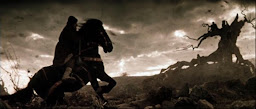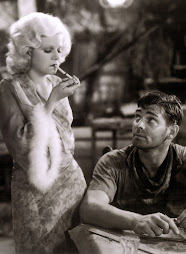Back in the day, New York -- not L.A. -- was America's movie production capital. Way, way back in the day. Like, one hundred years ago back in the day. The boys who worked for Edison and Biograph grabbed their cameras, plunked them down on some interesting street corner, and started filming all the comings and goings of New York City and her people. This mostly had to do with the fact that Thomas Edison worked out of New Jersey and New York, so naturally he took his new movie cameras to the city; it was simply a matter of practical convenience. But New York was also the ideal location because it provided these early filmmakers with dozens of possible subjects to shoot, all available during the sun-filled daylight hours. Because film stock was so slow in these early days, large amounts of light were needed to get a good exposure, and the sun was about the only thing around that could guarantee a good exposure. Not only that, but the streets of New York were brimming with life and wonderment, with crowds and construction projects, with skyscrapers and street urchins, and it was just the kind of stuff the new movie audiences of America wanted to see. These early films were often the first exposure many Americans had to New York City; they were often the only exposure many of these citizens would ever have to America's greatest city. Even today, everyone thinks they know New York, even if they've never been there, simply because they've seen the city in the movies.
These earliest of films -- called actualities -- were two-minute mini-documentaries, cinema verite-style, that simply recorded the city as it was, as things happened. The earliest actualities involved a stationary camera recording such things as Skating on Lake, Central Park; New York City in a Blizzard; Electrocuting an Elephant (at Coney Island) -- the titles explaining exactly what you were about to see, no artistry or narrative or filmic style, just point and shoot and get it all done during daylight hours. As camera technology developed and the camera could be moved, new actualities featured a sweeping, rolling camera that panned and tilted its way over and through the city's great buildings and streets. Finally, when film stocks improved so that high amounts of direct sunlight were not needed to shoot anymore, the actualities could suddenly get down into the depths of the new subway system, or they could travel to Coney Island at Night for Edwin S. Porter's famous film of "Dreamland."
Eventually these actualities gave way to narrative filmmaking, and eventually the movie industry would move across the continent to California, to the studio system and its Hollywood stars; but for the first few years of motion picture production in America, it was New York City and her everyday people who were the stars of the cinema.
At the Foot of the Flatiron:
Twenty-three-Skiddoo!
Sky Scrapers of New York City, from the North River:
Lower Broadway:
Interior, N.Y. Subway, 14th St to 42nd St:
Coney Island at Night (I wish I could find a clip to embed here, but there doesn't seem to be any available. The best I can do is link to a clip from Getty Images)
This sticker is dangerous and inconvenient but I do love Fig Newtons
Subscribe to:
Post Comments (Atom)












_01.jpg)







No comments:
Post a Comment